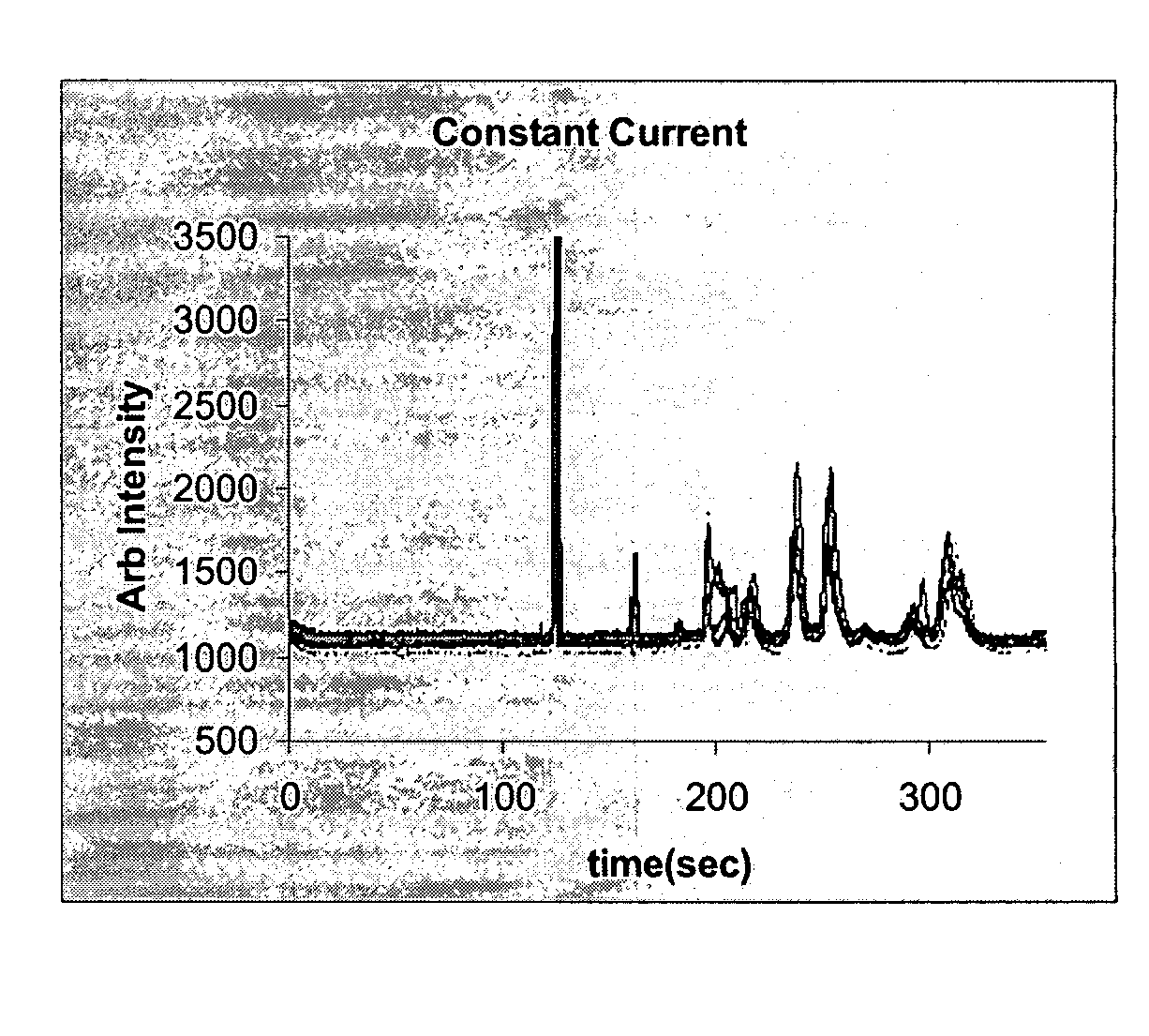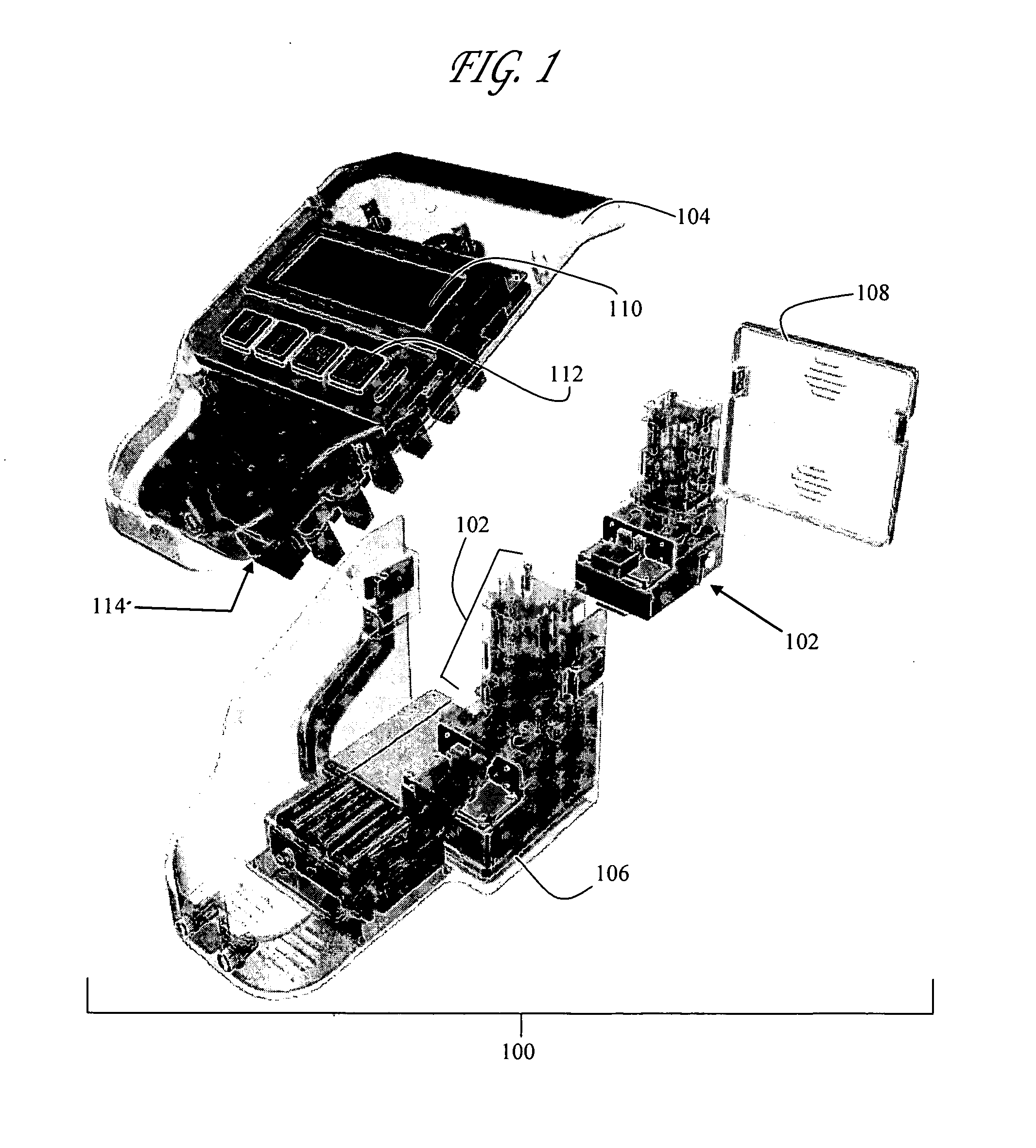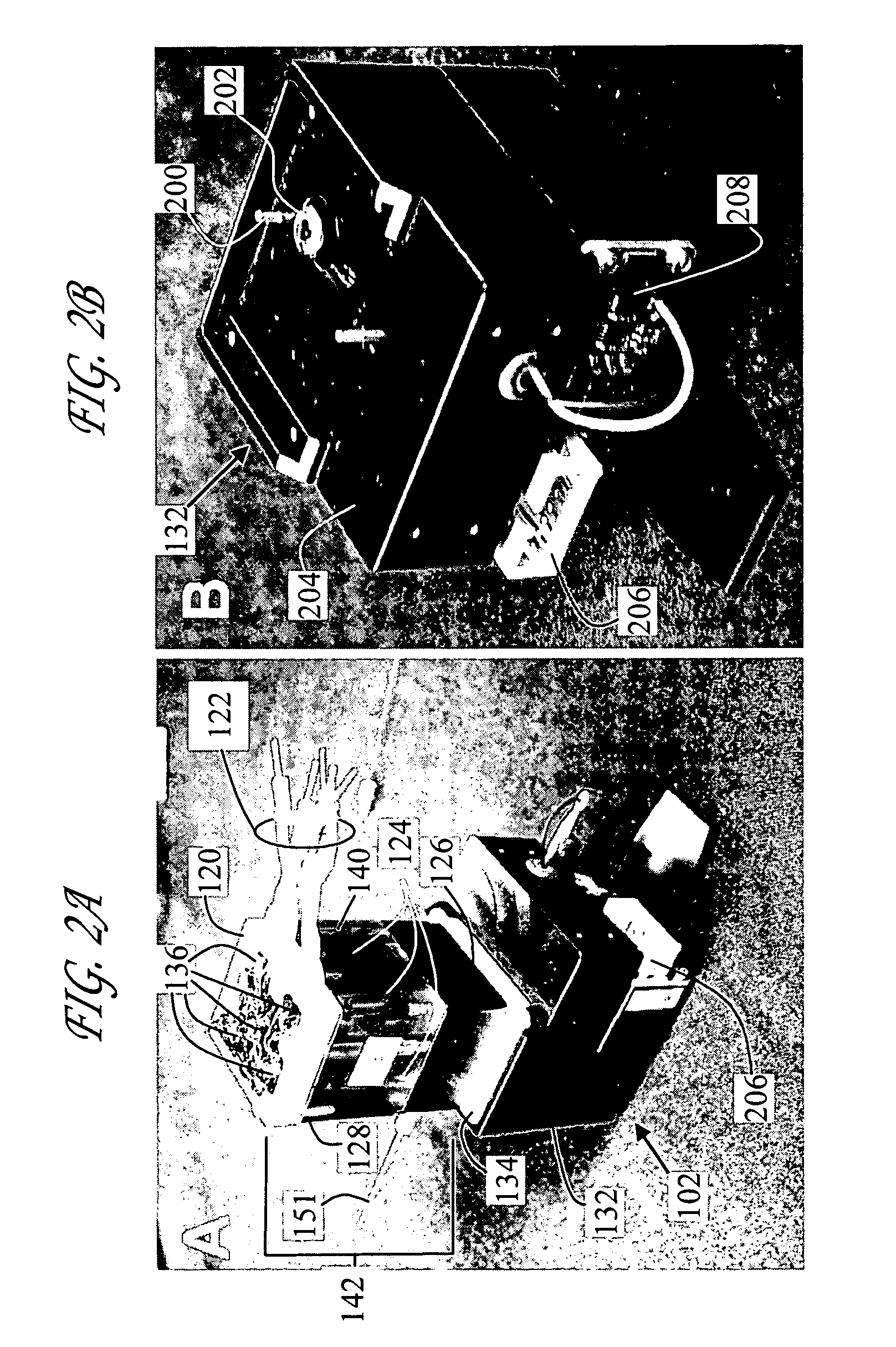Viral identification by generation and detection of protein signatures
a technology of protein signatures and viral identification, applied in the field of micrototal analysis systems, can solve the problems of non-specificity, laborious current methods, and difficulty in rapidly detecting and identifying viruses
- Summary
- Abstract
- Description
- Claims
- Application Information
AI Technical Summary
Benefits of technology
Problems solved by technology
Method used
Image
Examples
examples
Preparing Microfluidic Chips
Microfluidic chips were generally fabricated from Corning 7980 fused silica wafers (100 mm diameter, 0.75 mm thickness using standard photolithography, wet etch, and bonding techniques. Fused Silica wafers were PECVD deposited with amorphous silicon (150 nm), which served as the hard mask. A 7.5-micron thick layer of positive photoresist was spin-coated and soft-baked (90° C., 5 minutes). The mask pattern was transferred to the photoresist by exposing it to UV light in a contact mask aligner. After exposure, the photoresist was developed and hard-baked (125° C., 30 minutes). Exposed silicon was etched in a plasma etch tool. Silicon etch process typically consisted of a 30 second oxygen ash @200W DC @25 mTorr, followed by 150 second SF6 @200W DC & 50 mTorr. The exposed glass was etched with a 49% HF solution. Via access holes were drilled in the cover plate (Corning 7980) with diamond-tipped drill bits. The etched wafers and drilled cover plates were cl...
example
Analysis of Eukaryotic Cells and Tissues
Samples of eukaryotic cells and tissues are first lysed and the proteins solubilized. Cell and tissue samples are first solubilized in a phosphate buffer, or an appropriate buffer containing detergent such as SDS, Triton-X or NP-40, at a neutral pH such as 7.4. Once these sample are dissolved in buffer, they are heated to approximately 100° C. for a period of five minutes or more. A fraction of this sample is then placed in the standard CGE separation buffer containing 5 mM boric acid, 5 mM sodium lauryl sulfate in water drop-wise adjusted to pH 8.5 with 1M NaOH for injection onto the microfluidic chip. The proteins are then labeled using an appropriate dye, such as fluorescamine. Labeled samples are then injected on to the microfluidic chip using a specially modified gas tight syringe as previously described. Subsequently an EK injection and separation are then performed as previously described in “Detection of Viral Signatures”.
PUM
| Property | Measurement | Unit |
|---|---|---|
| Time | aaaaa | aaaaa |
| Time | aaaaa | aaaaa |
| Time | aaaaa | aaaaa |
Abstract
Description
Claims
Application Information
 Login to View More
Login to View More - R&D
- Intellectual Property
- Life Sciences
- Materials
- Tech Scout
- Unparalleled Data Quality
- Higher Quality Content
- 60% Fewer Hallucinations
Browse by: Latest US Patents, China's latest patents, Technical Efficacy Thesaurus, Application Domain, Technology Topic, Popular Technical Reports.
© 2025 PatSnap. All rights reserved.Legal|Privacy policy|Modern Slavery Act Transparency Statement|Sitemap|About US| Contact US: help@patsnap.com



